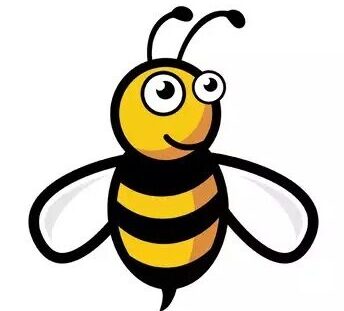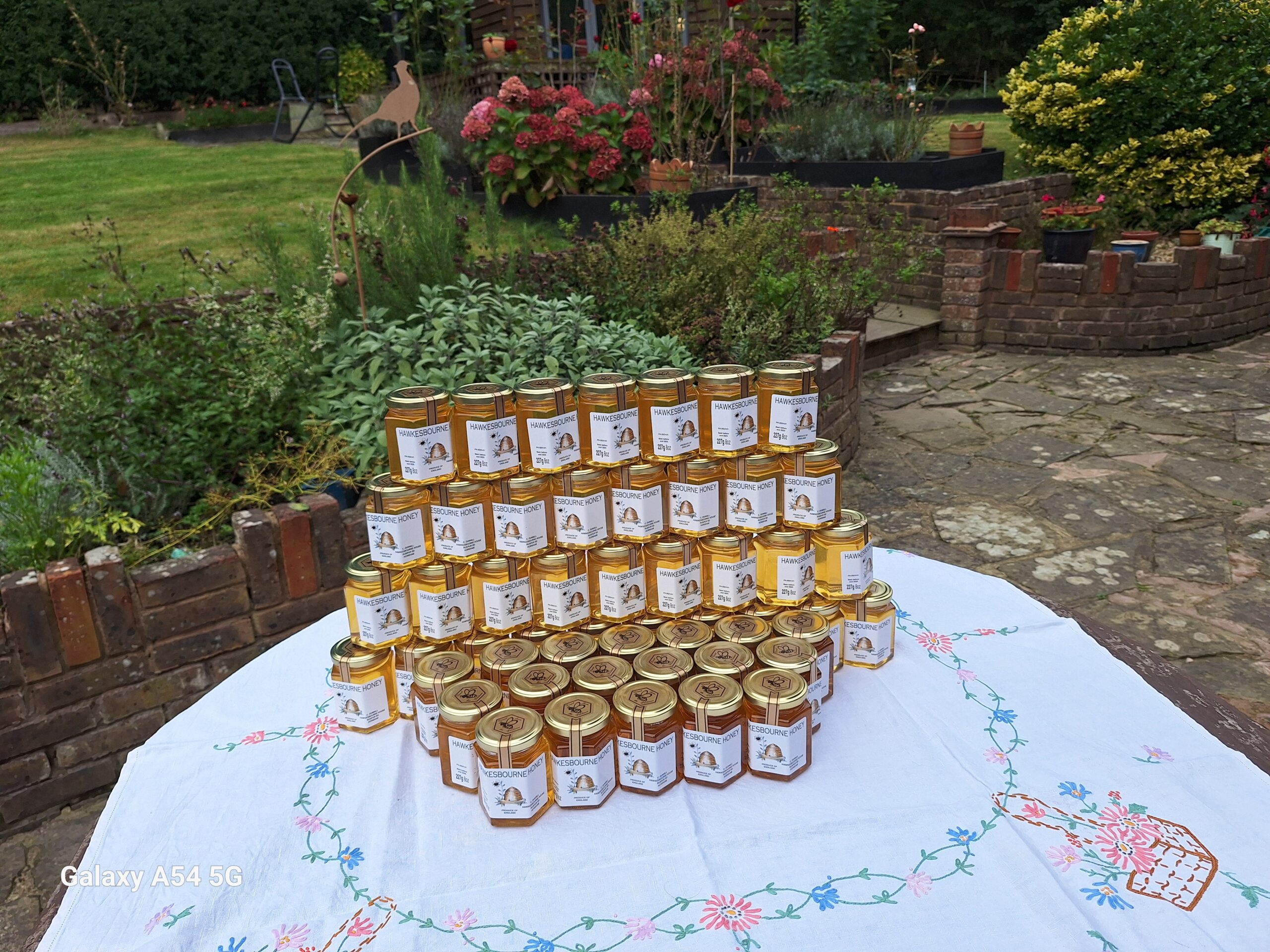As is always the case with my beekeeping I have one harvest a year. Like other years the harvest was end of August and beginning of September. It is a difficult job judging when to take the harvest. You want to have a period of good weather where the flow is in full stream. Too early and you end up with a lot of uncapped honey, too late and the Ivy flow has come in and solidified the honey in your flow frames. This year looking at the weather the first weekend in September was the best. Just following a two week stint of fantastic weather which would have really given the bees a good chance to get in loads of honey. Given the I was doing emergency feeding in June thinking that all the hives were starving and indeed lost one hive, (Dark Blue Wood) I was lucky to be taking any harvest at all.
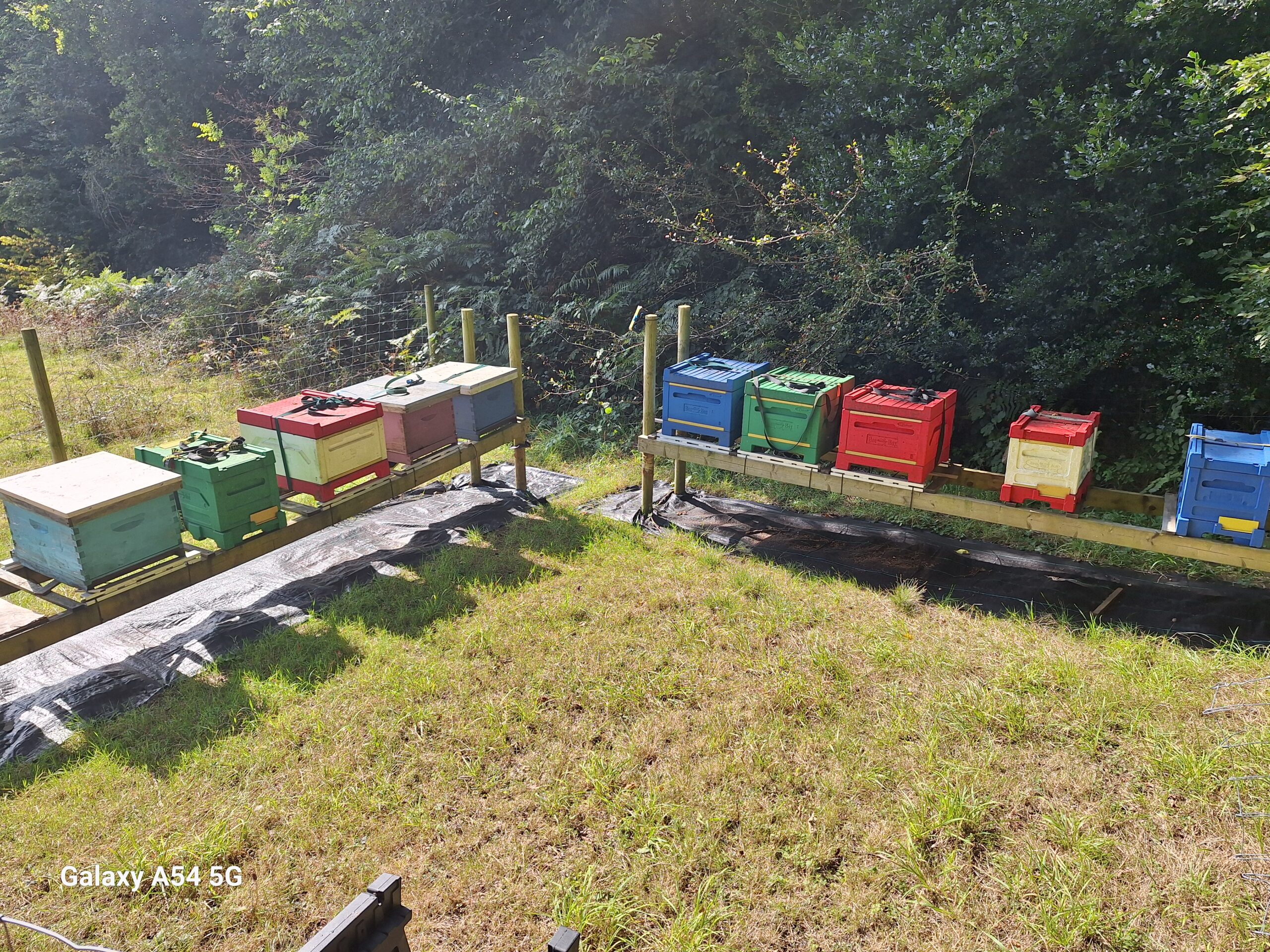
There were six hives available for harvest:
- Red Poly – Flow Hybrid 5 Flow frames 3 Cut comb frames.
- Green Poly – Flow Hybrid 5 Flow frames 3 Cut comb frames.
- Blue Poly – Flow Hybrid 5 Flow frames 3 Cut comb frames.
- Red/White Poly – 10 Cut comb frames.
- Light Blue Wood – Flow Hybrid 5 Flow frames 3 Cut comb frames.
- Purple Wood – Flow Hybrid 5 Flow frames 3 Cut comb frames.
- Dark Blue Wood – Empty
There was therefore loads of potential for a really good honey harvest. The weather however had not been kind and the bees were struggling to keep up after a very slow start to spring and a very hard time during the dearth. In the end Red Poly Hive was my best performer with five good frames of capped honey, light blue wooden hive was not far behind with 4 frames of caped and Green Poly gave 3 frames there was no cut comb to be found in any of the hives. The red and white poly was at 35 Kg but didn’t have any cut comb or any sign that the bees had even looked a the super. In addition to this there were 4 frames of uncapped honey in the Blue Poly and 1 or 2 from the Green Poly hive. Uncapped honey is great to eat but not sufficiently low water content to be able to sell.
All in all, it was not a bad year. Given that last year yielded approximately 5 jars of honey, this year was going to be significantly better. All of the capped honey was run through my usual process that yielded top quality honey ready for sale. The uncapped honey was run in a separate box and was stored as wet honey that I can either feed back to the bees should they run out over winter or I can use to make Mead. This is going to be the excitement of this year as I give brewing Mead a go. Update: The mead was a disaster. pale non alcoholic juice was the result with no nice flavours at all. think it was just too cold and the yeast didn’t get started properly to actually ferment the sugar.. Will try again next year but probably with apples from the garden rather than valuable honey supply.
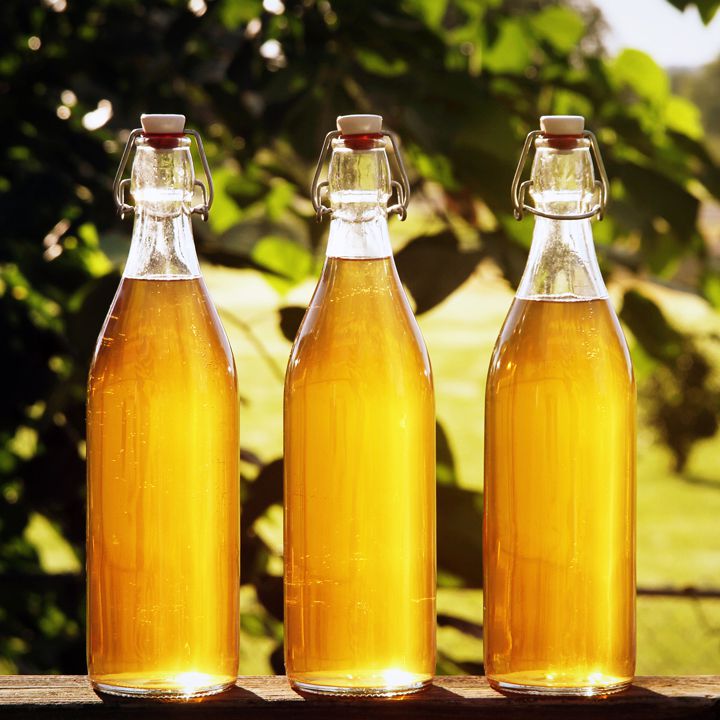
Looking at the weight of the hives all of the hives were bees in have a considerable rounds of honey remaining in the fruit boxes ready to take them through the winter. For reference I try and harvest when the hives are at 50 kilogrammes and once the Super is removed full of honey this tends to drop the weight down to 35 kilogrammes. This gives the bees approximately 30 kilos of honey to take them through the winter. Many beekeepers will error in taking too much honey from their bees and leaving them with little supply over the winter which results in starving colonies or the need to feed with a non-ideal feed such as Supplementary sugar. It is a delicate balance of taxing the bees and charging them rent without driving them into a destructive cycle.
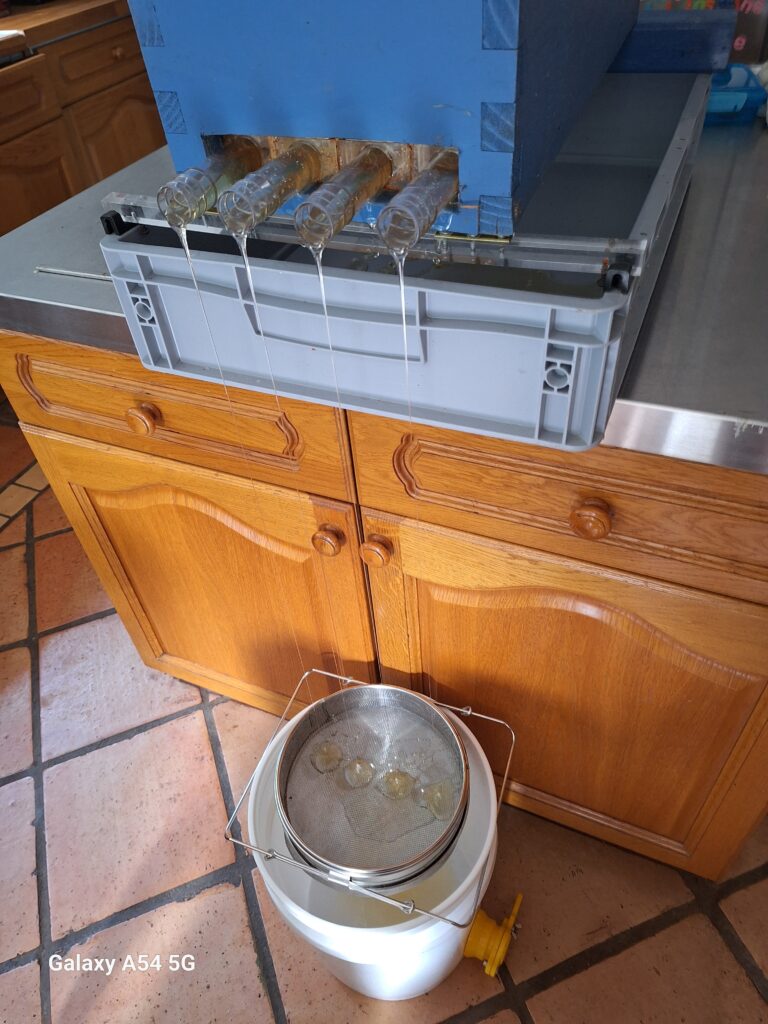
For the first 4 frames that came off the hive I used this method to run the honey. The flow frames were set up over a cleaned drip tray and activated so that the honey would flow out of their spouts and straight into the honey bucket with the honey gate.
So this picture is a really interesting picture that potentially needs a bit of explanation. This is a side on view of the setup above showing the amount of honey that is dripping out of the flow hive system and not through the spout. If I were harvesting this in a hive as the system is designed to achieve. All of this honey would be wasted product, dripping down through the bottom of the hive and eventually landing on the floor underneath the hive. Not only would this all go to waste but would have the huge potential to attract mice rats as well as ants and other flying insects. The bees simply would not be able to clean up a mess of this magnitude. This is the pictorial evidence of why I choose to harvest the flow frames in a controlled environment over a sanitised drip tray. This is probably the last time I will ever run honey in this set up given the amount of leakage through the base of the flow frame system.
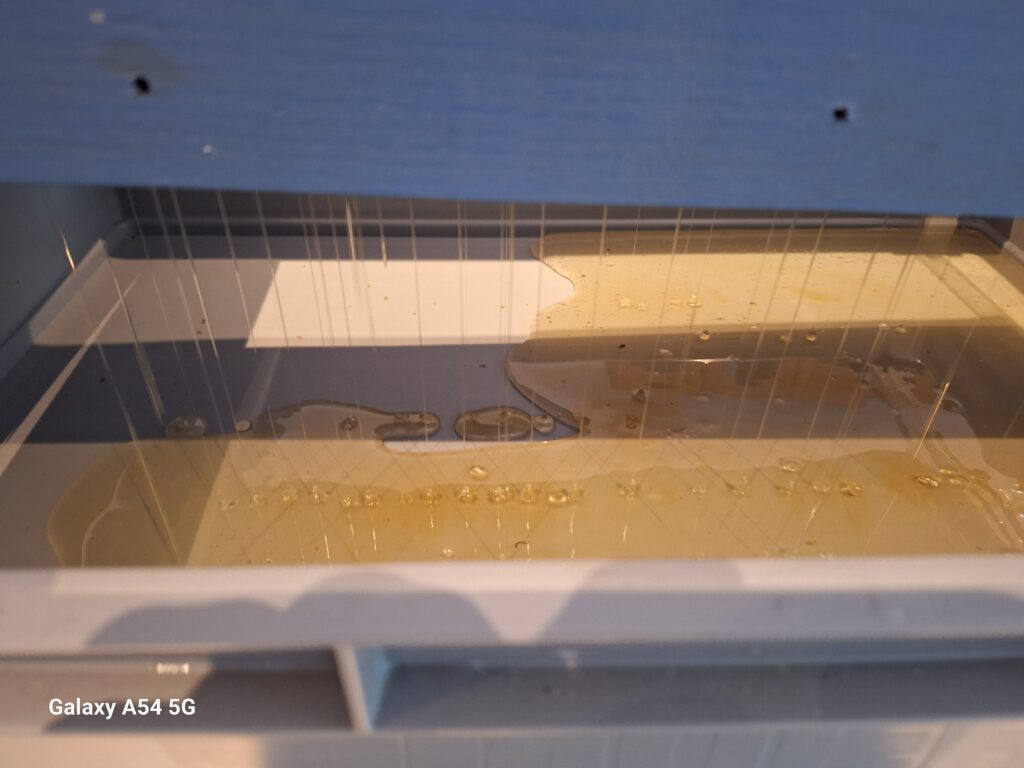
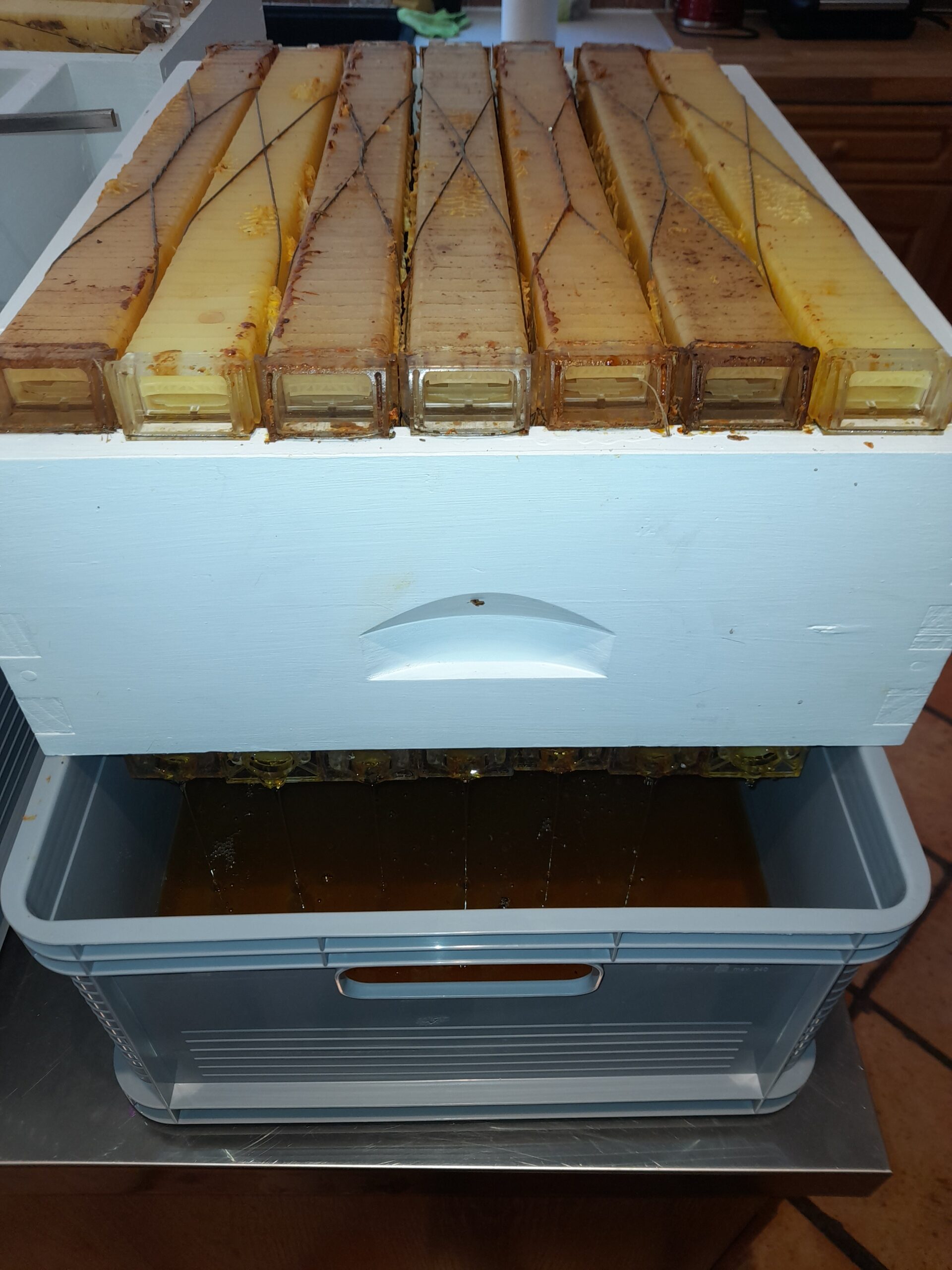
This is the new setup where I have a fully sterilised containment system with the flow frames inserted into a honey super and suspended over a food grade plastic drip tray. All of the honey is now simply run straight into the drip tray which is then poured through the 200 Micron sieve as before. This cuts down on an awful lot of potential sticky spells and allows me to harvest all the honey irrespective of whether it is coming out of the correct spout all simply dripping out of the bottom of the flow frames. It should be noted that I’m still a massive fan of the flow frame system, but I choose to harvest in this way.
Total yield for this year was approximately 25 kilogrammes of flow frame honey and 4 kilogrammes of unsellable wet honey that I will use to try and make Mead.
